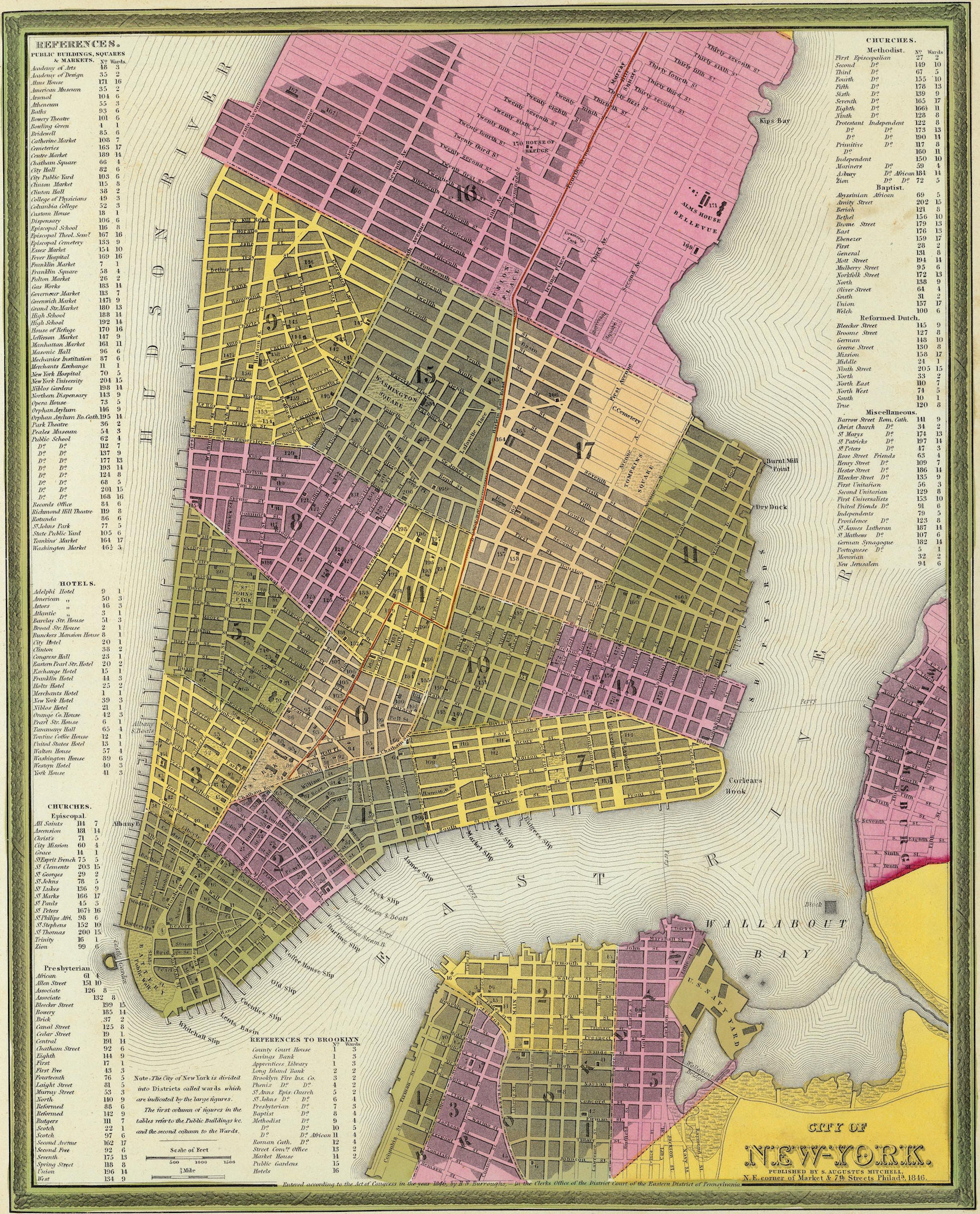In 1822, a Yellow Fever outbreak swept through New York.
The outbreak's epicenter was at the port downtown, where ships came in from Europe, Africa, and the Caribbean. The more affluent New Yorkers fled up north to escape poor sanitation, congestion, and disease. They moved to the outskirts of the city near Greene Street.
Lithograph, 1793 Yellow Fever epidemic. From Nova, A Short History of Quarantine.
Zoom to map
City Of New York. Samuel Augustus Mitchell, 1846. David Rumsey Maps
Greene Street

Zoom to map
[Plate 32: Map bounded by Houston Street, Crosby Street, Prince Street, Marion Street, Spring Street, Laurens Street.] Perris-Browne, 1853. Lionel Pincus and Princess Firyal Map Division, The New York Public Library Digital Collections.

1850 Federal Census Records
Map Legend:
Purple: 1830's
Green: 1840's
Blue: 1850's
Orange: Synagogue
Map, created with OpenStreet tiles in Mapbox.
Purple: 1830's
Green: 1840's
Blue: 1850's
Orange: Synagogue
Map, created with OpenStreet tiles in Mapbox.
Map of the city of New York extending northward to Fiftieth Street, Matthew Dripps, 1852. David Rumsey Map Collection
Greene Street rapidly became a wealthy neighborhood.